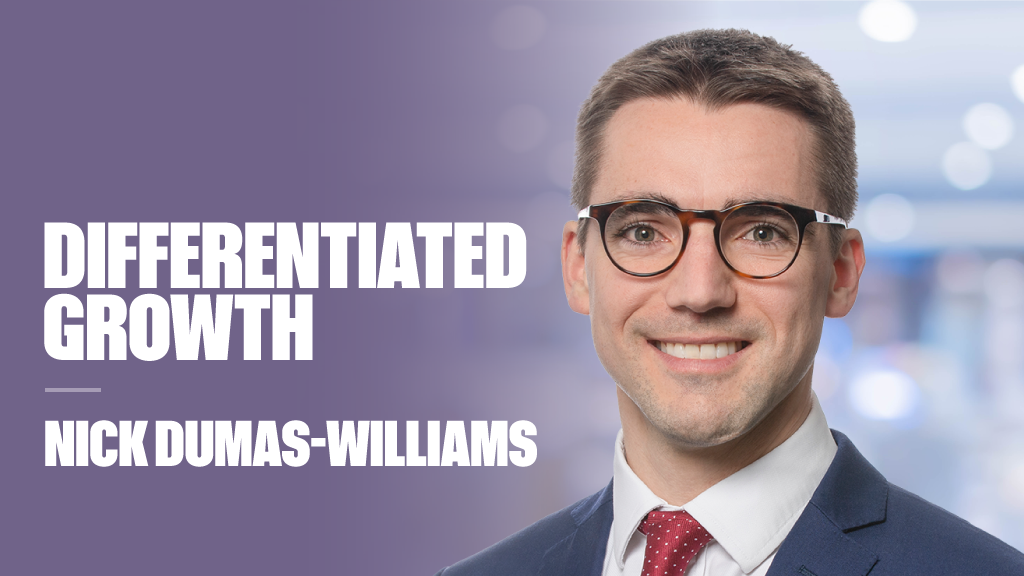While our fund’s primary focus is to deliver strong total returns, we appreciate the importance of a reliable income stream in today’s world of record low government yields and negative real cash returns.
The fund invests primarily in the sterling-denominated debt of large investment grade companies, but also has the flexibility to take advantage of the diversification, liquidity and valuation benefits of the dollar and euro markets, with all currency exposure hedged back into sterling.
The fund can also make use of derivatives for hedging purposes and to more efficiently implement our fundamental views while minimising costs to the fund.
We believe our commitment to creating alpha within the portfolio through an unapologetically active approach sets us apart. We do not believe that clients deserve one large bet and a “wait and see”.
A nimble mindset
The fund creates value through a series of investments that range from short-term market level directional calls to deep-value fundamental investments that may evolve over months or even years.
Volatility in bond markets is exceptionally high; we firmly
We believe our commitment to creating alpha within the portfolio through an unapologetically active approach sets us apart.
Ben Edwards, portfolio manager, BlackRock UK Corporate Bond Fund
believe that a flexible mindset and the ability to be nimble will be rewarded, and we can achieve strong performance but avoid excessive volatility. Performance is good; risk-adjusted performance is better.
We thrive on not just getting the call right but on finding the most efficient way to implement that view – minimising costs, maximising diversification and avoiding defaults.
Our ability to build an optimal portfolio relies on robust risk systems. Every fund manager knows the risks they intend to have in their portfolio, but we also focus on the unintended risks. The fund can be stress-tested against historic or future scenarios to highlight potential weaknesses and allow us to scale risk accordingly.
The issues driving prices and volatility in financial markets are global ones – financial sector deleveraging, falling government yields, below trend growth and lack of investment options. Simon Blundell (my co-manager) and I combine our own UK experience with the insight of a pool of global specialists to help form our views on both market direction and individual securities.
Corporate bond markets are becoming more global too, with UK issuers now making up less than 60% of the sterling corporate market.
With one of the largest global credit research capabilities in the world, we are able to not only find the best opportunities in global credit markets but to better understand many of the local opportunities.
Conservative on high yield
The fund has the ability to invest up to 10% in high yield securities, but at the moment retains a very conservative position in this area.
While we fully understand the strong technicals that have seen enormous flows into the high yield market over the past year, we are concerned that some of the downside risks have not been fully appreciated by non-traditional investors.
It is true that sub-investment grade companies have successfully extended the maturities of their debt profile and retain relatively solid cash balances at a time of low realised defaults. But their ability to cut costs and expand margins, as they did in 2008-09, has been reduced by the lacklustre and extended recovery phase of the European and global economies.
We believe that a worse than expected economic outcome, particularly in Europe, could trigger significant liquidity issues as recent investors look to exit.
Given the recent strong performance of sub-investment grade bonds, we prefer to devote risk capital to more liquid and still high-yielding sectors of the investment grade market.
The BlackRock Corporate Bond Fund provides investors with diversified exposure to high quality companies at attractive yields in an uncertain environment. Providing an attractive and reliable income stream to our investors will always be important to us.
Further, the fund provides a way of accessing alpha opportunities from a broad range of sources, with a clear investment process based on harnessing the very best of Blackrock’s credit investment capabilities to deliver consistent performance. For us, it is simple: income plus alpha.
"On the other hand," says Paul Read…
Paul Read thinks the best strategy is to create the right mix of investment grade corporate bond elements with financials and some high yield bonds.
To understand our current strategy for the Invesco Perpetual Corporate Bond Fund, we have to look at the context of the yields available across the wider fixed interest universe, starting with gilts.
Gilt yields are at record lows and are influencing the corporate bond market so that a significant portion of the sterling investment grade universe is yielding less than 2%.
These bonds are typically relatively short maturity and
We think that we are at the end of a quite a long bull market and clearly in some areas of the corporate bond market, as in gilts, the potential upside is limited.
Paul Read, co-manager of the Invesco Perpetual Corporate Bond Fund
in the non-financial sectors, but they are not confined just to the very highest credit quality categories or just very short maturities. Many bonds with relatively long maturity also have very low yields.
We currently see the best opportunities in credit risk. We do not think that investors are being well rewarded for taking maturity risk and so we are keeping the duration of the fund reasonably low.
The fund could be seen as having two halves at the moment. There is a core investment grade corporate bond element with quite a lot of highly liquid securities and short-dated corporate bonds.
The other half of the portfolio, roughly speaking, is invested in financials and high yield bonds.
The financials element of the fund is widely diversified. It includes holdings in banks, insurers and other financial services. It also includes securities with a wide range of maturities and seniorities – senior bonds, covered bonds and subordinated bonds.
Financials is an area where we can generate attractive levels of income and where there is potential for capital appreciation too.
Results of bank reforms
We think that the ongoing reform of bank capital structures will result in better capitalised, more liquid, better funded and more conservative institutions.
As debt holders, we welcome this and we think that there are generous yields available in the market, especially in large, northern European and American ‘national champion’ banks, relative to their credit and subordination risks and relative to non-financials.
According to data from Merrill Lynch, sterling Tier 1 subordinated bank debt yielded an aggregate 9% as at the end of August. This compares with 4.3% for sterling investment grade as a whole and 3.6% for non-financial sterling investment grade.
The sector continues to be supported by tenders from banks in the UK and across Europe to buy back their own debts.
These buy-backs reduce the outstanding stock of available investments as well as increasing confidence in the financial strength of these institutions.
From here, we think that it is going to be quite hard to generate capital upside in the non-financial, core investment grade corporate bond markets.
We think that we are at the end of a quite a long bull market and clearly in some areas of the corporate bond market, as in gilts, the potential upside is limited.
So, it has become even more important to focus on where we can generate attractive income within the remit of the fund.










